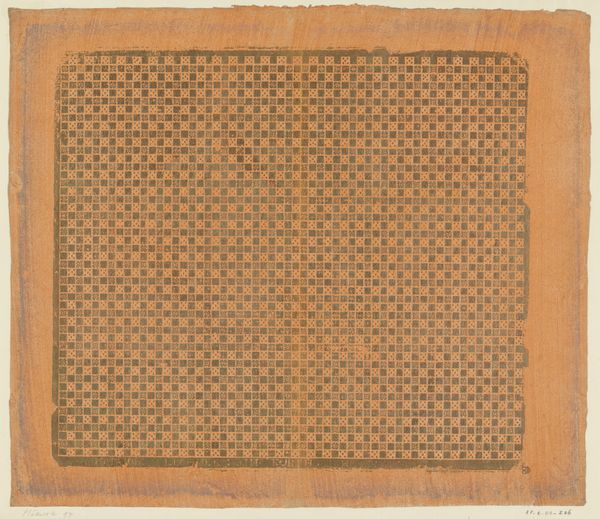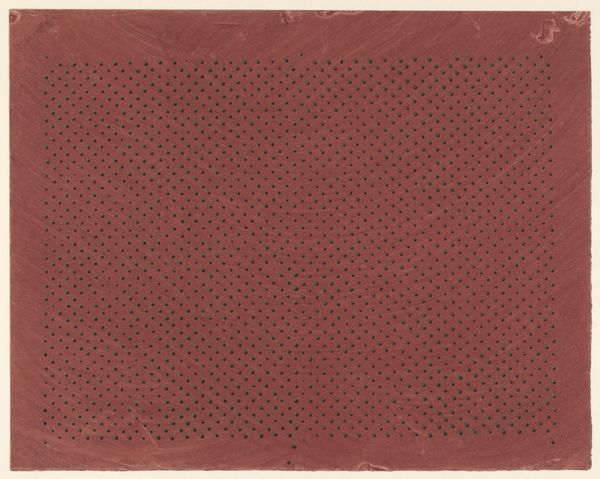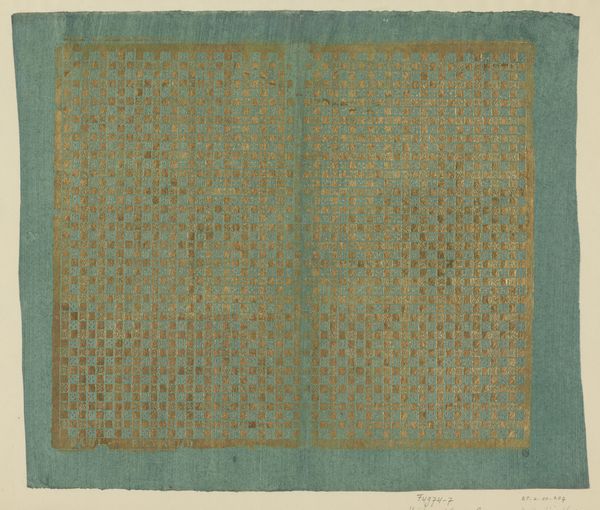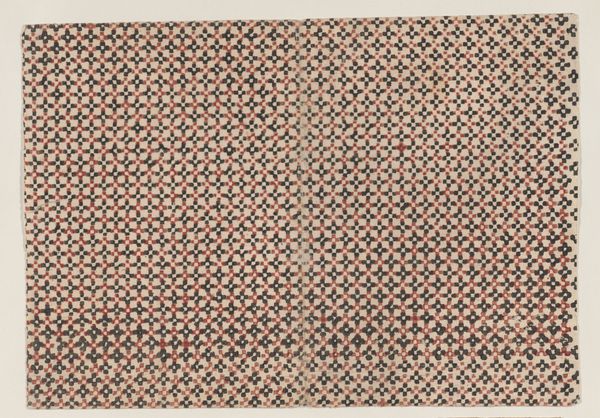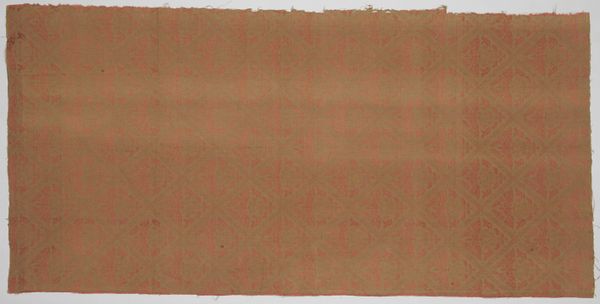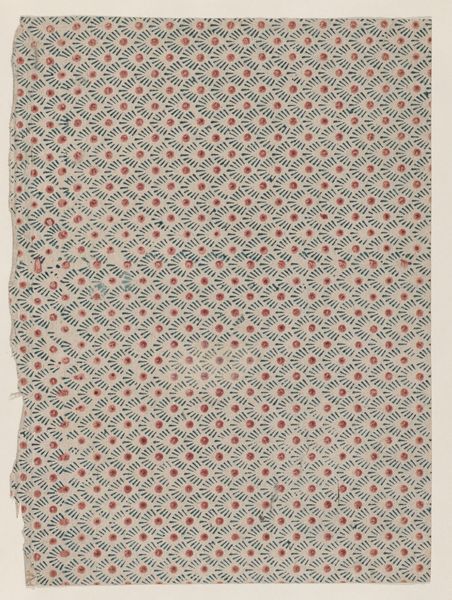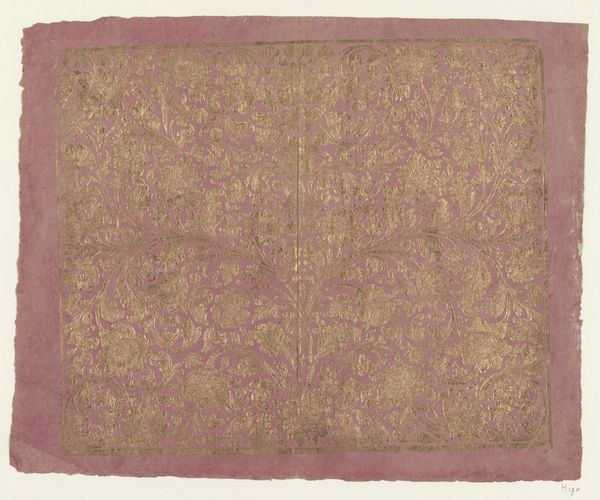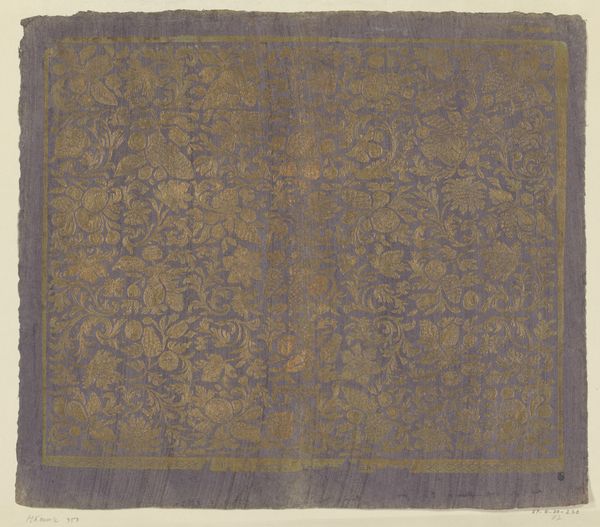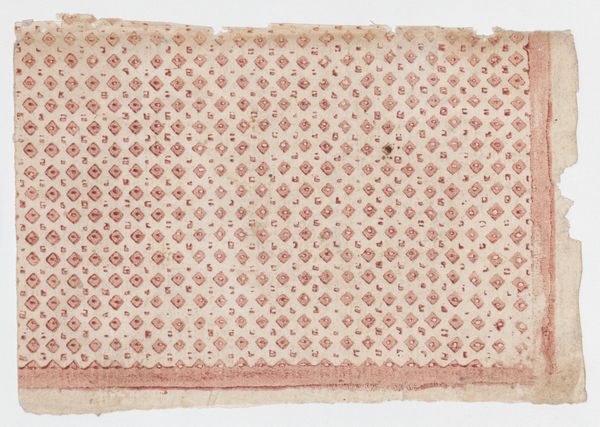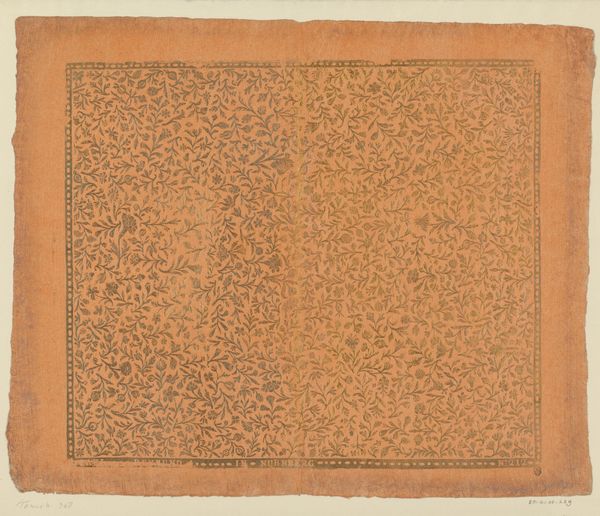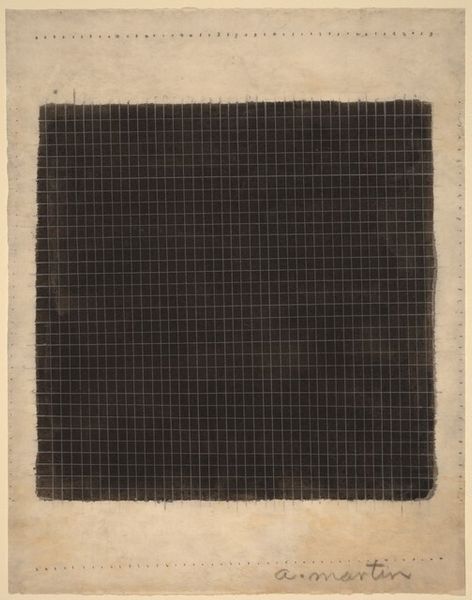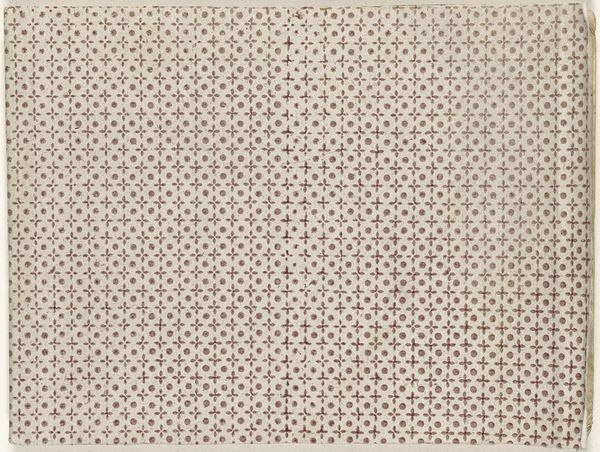
print, paper, woodcut
# print
#
paper
#
geometric
#
woodcut
#
geometric-abstraction
#
watercolor
Dimensions: height 297 mm, width 352 mm
Copyright: Rijks Museum: Open Domain
Editor: Here we have “Blad met schaakbordpatroon,” or “Sheet with chessboard pattern,” created sometime between 1783 and 1815. It’s a print on paper housed here at the Rijksmuseum. The repeating squares are making me feel a little dizzy, and I’m curious, what historical factors might have influenced such a meticulously patterned print? Curator: That's an excellent observation. It is interesting to consider this work within the broader context of the late 18th and early 19th centuries. We often view art through the lens of individual genius, but this period also saw the rise of industrialization. Could this pattern be seen as a reflection of the increasing standardization and repetition of labor? Editor: So you’re saying this print might speak to the impact of new economic systems? I hadn't thought about it that way. The small imperfections feel like a pushback. Curator: Precisely! It subtly resists absolute perfection, hinting at the human hand, wouldn't you agree? The artwork challenges the very idea of flawless replication that early industrial processes promised. Consider also, how art academies at the time promoted specific genres and styles; does this deviate from those norms? Editor: Definitely. This feels much more… experimental, perhaps even defying expectations. Did prints like this have a particular audience or function then? Curator: Prints during this time played various public roles, from disseminating political ideas to decorative purposes. Given the geometric abstraction, it seems intended more for aesthetic appreciation, perhaps catering to a specific intellectual circle interested in exploring new forms of visual expression. It prompts us to question the rigid categories we often impose on art and its purposes. Editor: I see what you mean. So by looking at the societal shifts of the time, and how institutions shaped art, we get a much richer understanding. Curator: Exactly! By considering the economic context and how it diverges from established academic practices, we can understand its significance and its own silent commentary. Editor: That’s given me a lot to consider. It really pushes me to think beyond the surface. Thanks for the insight.
Comments
No comments
Be the first to comment and join the conversation on the ultimate creative platform.
